Types of Diamond Clarity Characteristics (Inclusions) to Avoid

What are the worst types of diamond inclusions to beware of?
In real life, diamonds are rarely perfect and will typically possess imperfections called inclusions/blemishes. Depending on the clarity grade that the diamond has, the severity of the inclusions can vary from benign to being outright hideous.
While most inclusions are not visible to the naked eye in gem-grade diamonds, there are some types of inclusions that can be nasty and deal breakers.
In this write up, I will reveal the worst types of diamond inclusions you should avoid and show you how to make smarter purchase decisions to ensure you get a bright/sparkly diamond.
Here is a list of topics we will be covering:
- 3 General Characteristics of Diamond Flaws to Avoid
- Are They Any Specific Types of Diamond Inclusions I Would Avoid?
- #1 – Chip (Worst Inclusion Type to Have)
- #2 – Laser Drill Hole (Clarity Treatment)
- #3 – “Clarity Grade Based on xxxxxx Not Shown” Comment
- #4 – Cavity Imperfections
- #5 – Feather Flaws (Fracture)
- #6 – Crystal Inclusions (Colored/Poorly Positioned)
- Summary – Which Are the Worst Inclusions to Avoid in a Diamond?
3 General Characteristics of Diamond Flaws to Avoid
In general, there are 3 characteristics of diamond flaws I would avoid:
- Negatively impacts brilliance or causes hazy appearance.
- Easily visible to the naked eye.
- Cause structural or durability issues.
When diamonds are graded in a laboratory for their clarity, the inclusions are assessed based on their size, number, position, type and relief. The clarity grade is then determined based on a combination of these factors and very often, one or two of the largest inclusions in the diamond will set the grade.
In a nutshell, this means that the flaws or inclusions found in diamonds are not made equal.
For example, you could have an inclusion that is found near the crown area of the diamond and would hardly affect the diamond’s clarity grade. But if the same inclusion was found right at the center of the diamond, it may become very noticeable. Likewise, if a diamond had a feather inclusion that is buried deep within its body, it would pose significantly less risk than one that is found at the girdle.
Are They Any Specific Types of Diamond Inclusions I Would Avoid?

Well, the short answer is yes. There are certain types of inclusions that are automatic red flags for me like chips, laser drilled holes and SI clarity diamonds with comments like “Clarity grade based on xxxxx not-shown”.
The long answer is it depends on the particular diamond I’m buying.
For instance, I would have no problem buying a diamond that has a feather inclusion with a VVS2 clarity grade. However, if I’m buying an SI2 diamond with a grade making feather inclusion at the girdle area, I would have to assess the durability risks on a case-by-case basis.
This would also be true for crystal inclusions which are typically benign in higher clarity grade diamonds compared to grade making crystal inclusions in lower clarity grades.
At the end of the day, it is important to understand that inclusions like feathers, crystals, clouds and cavities are not necessarily bad. What is more important is to focus on the severity of the inclusion.
Now, let’s take a look at some of the worst offending inclusion types in more detail.
#1 – Chip (Worst Inclusion Type to Have)
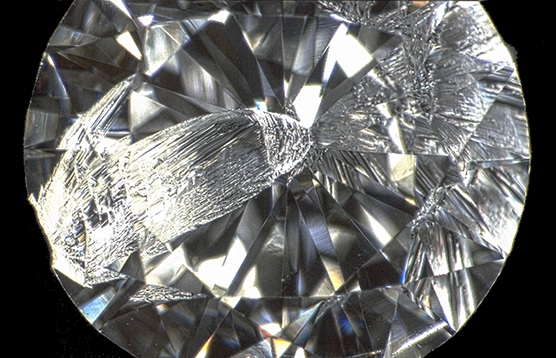
Diamond with a chip starting at its girdle and extending to its culet. Photo © GIA.
A chip is defined as a shallow opening on the surface of the diamond and is often caused by an impact on a facet junction, girdle edge or culet. In my opinion, this is one of the worst inclusions to have in a diamond as a chip can weaken the stone’s structural integrity.
Once a diamond is chipped, there’s a significantly higher risk of the chip growing and spreading if it is subjected to further impacts. In the market, chipped diamonds are usually priced at a discount but it is hardly worth to buy them as there’s always a looming risk of a cracked diamond during wear.
#2 – Laser Drill Hole (Clarity Treatment)

Diamond with laser drilled tunnel and remnants of black crystal inclusion. Photo © GIA.
A laser drilled hole is a telltale sign that the diamond has been artificially enhanced to improve the appearance of the inclusion. This is done by drilling a tunnel from the surface of the diamond to reach an embedded crystal inclusion. Very often, laser drilled diamonds are further treated with an acid bath or injected with a filler material to mask the inclusion.
When laser drilling is done extensively, the network of tunnels created within the diamond can hinder light transmission and be seen with the naked eyes.
Personally, I frown upon laser drilled diamonds because they are typically badly included to begin with to warrant such a treatment. The other reason is that most laser drilled diamonds are not priced accurately to reflect the true quality of the diamond and most consumers overpay for such diamonds in the market.
#3 – “Clarity Grade Based on xxxxxx Not Shown” Comment
When the following comment “Clarity grade based on cloud/graining not shown” is found in the grading report of a lower clarity grade diamond (SI or lower), this is an immediate red flag you need to beware of.
In most cases, the diamond will suffer from transparency issues that negatively impact its brilliance and sparkle due to the abundance of minute inclusions. Here are 2 real-life examples of how they look like. Feel free to click on them to interact with the video listing yourself.
Did you notice that both these diamonds seem to have no visible inclusions despite having slightly included clarity grades? However, both of them have a milky and “sleepy” look to their appearance.
For beginners who don’t have knowledge and experience in buying diamonds, there are many who think they’ve found the deal of a lifetime. But make no mistake, these 2 diamonds are graded correctly and they are hazy because of the minute cloud inclusions they have scattered throughout their bodies.
#4 – Cavity Imperfections
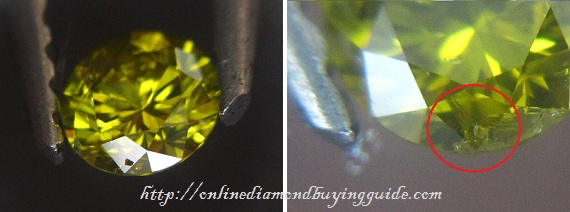
Diamond cavities on the bezel facet and girdle can be seen in the diamond above.
A cavity is an angular opening created when part of a feather breaks away or when an exposed inclusion drops out of its pocket during polishing. In layman terms, you can think of a cavity as a hole on the diamond’s surface.
While I usually shun away from cavities, you need to understand that a cavity in a VVS diamond would be completely different from a grade making cavity found in an SI1 or SI2 diamond. If the cavity is large (like the example above) or poses durability risks at the girdle, I would avoid the diamond.
#5 – Feather Flaws (Fracture)
A “feather” inclusion is basically a nice-sounding name for a crack/break in the diamond. When they are large in size and located near the girdle, they can present a durability problem as a hard impact can cause cleavage to occur.
In general, I would avoid feathers that pose significant structural risks and those that are colored/glossy which impedes light transmission. You can view 2 such examples in the listings (GIA #3345084608 & #5191450885) below where I would ditch the diamonds for other better options.
Now, I want to be very clear that not all feather inclusions are bad or would look like the examples I listed above because every diamond is unique. If you are buying diamonds with higher clarity grades like VS and VVS, they will generally not cause any issues and should be evaluated on a case by case basis.
If you are unsure, feel free to get in touch via email or the comment section below and I can help you review the diamonds you’ve shortlisted.
#6 – Crystal Inclusions (Colored/Poorly Positioned)
A crystal inclusion is a mineral crystal that is embedded within the diamond and they can come in a variety of shapes and sizes. They also happen to be one of the trickiest inclusions that can cause a beginner to make a bad purchase.
Why? Well, that’s because of the simplistic symbol they are drawn with on the clarity characteristic plot. What may look really benign on a clarity plot may actually look really nasty in real life. I’ve listed one such example below (GIA #2294679878).
When it comes to crystal inclusions, I would avoid dark/black colored crystals that can be seen with the naked eye and this usually happens when they are smack right in the center of the diamond. Also, diamonds are reflective by nature and poorly positioned inclusions can sometimes be reflected like a Hall of Mirrors.
An optical nuisance created by reflections of a dark crystal inclusion.
Summary – Which Are the Worst Inclusions to Avoid in a Diamond?
To recap, the 3 worse types of inclusions that will automatically cause me to reject a diamond are: chips, laser drill holes and clarity comments that set the grade especially in SI or lower rated diamonds.
As for the other types of inclusions, it doesn’t mean they automatically pass my guidelines. Depending on the clarity grade of the diamond, I would evaluate them on a case by case basis. In general, I personally use these guidelines when reviewing a diamond.
– Do the inclusions affect brilliance or cause haziness?
– Are the inclusions eyeclean when viewed at a distance of 12″-15″?
– Do the inclusions pose durability issues during normal wear?
If any of these inclusion guidelines are violated, I would avoid the diamond and look for a better alternative.
On the last note, a lot of people get too hung up on buying high clarity diamonds because of misguided fears and a lack of understanding. You need to understand that it’s perfectly normal for diamonds to have inclusions as it is part and parcel of their natural formation process.
In my opinion, as long as a diamond is eyeclean and the inclusions do not cause any negative visual impact on the diamond, there’s no practical reason for you to pay for a high clarity grade. I hope this article helped. Good luck with your shopping!
Related Articles
Leave A Comment

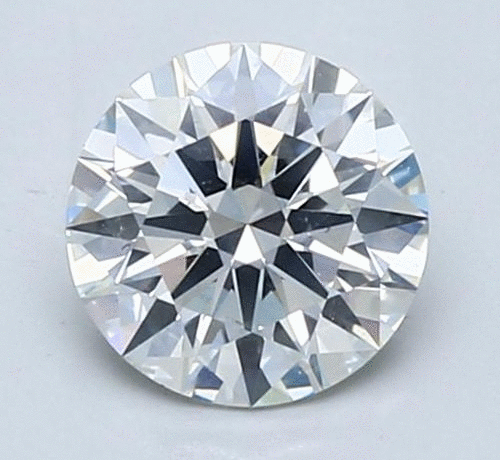

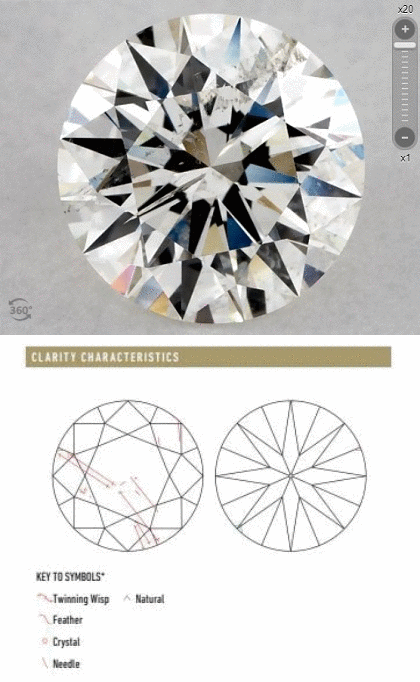
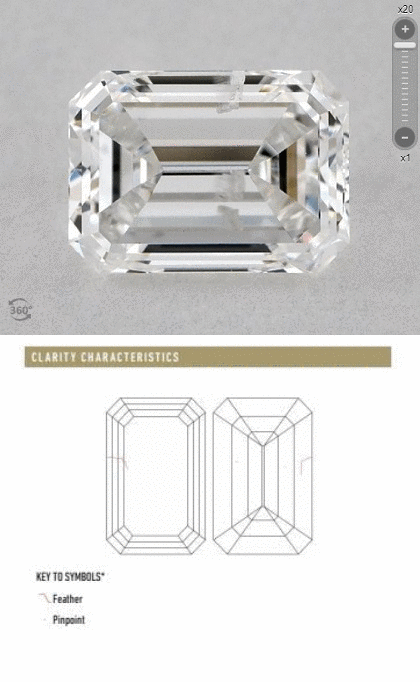


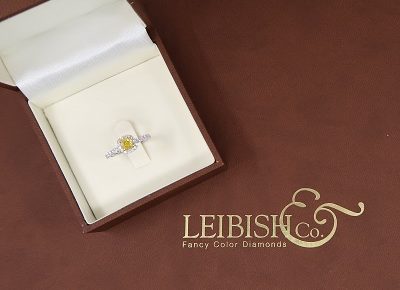
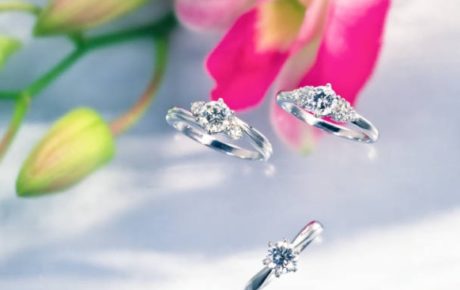










6 Comments
Which diamond inclusions are the worst in a princess cut diamond? Would a crystal inclusion near the tip of the diamond be bad or would a feather inclusion be worse?
The pointed edges of a princess cut diamond are most vulnerable to chipping because of the weak mechanical strength they have there. As stated above in the article, the worst inclusions to have in a princess cut for durability risks are chips and feathers. So, the worse inclusion between a crystal and a feather would be the latter but I would have to say that you still need some objective evaluation on this
Hello,
Could you please advise if an oval trilogy ring with colour f, clarity si1 with a carat of 1.0 carat with a feather inclusion will not wear well?
I generally don’t see issues with feathers in SI1 diamonds or even SI2 diamonds for that matter. If your definition of “wear well” refers to it being damaged during normal wear, I highly doubt it will happen unless a serious accident takes place. And in such a scenario, I doubt an IF diamond can hold up well too.
I actually have this diamond on the way (free returns, though, thank goodness) and just came across this post regarding feathering on the edge (I thought it wasn’t noticable at all and prongs would maybe hide due to location) but now I am a little freaked out and worried about breakage (especially considering the $$$)! Please let me know if you think I should return and keep looking…. https://www.jamesallen.com/loose-diamonds/marquise-cut/1.61-carat-e-color-vs1-clarity-sku-16687485
The marquise diamond looks perfectly fine to me! Rest assured that the feather will not be an issue in a VS1 diamond. When diamonds are graded for clarity in the lab, they take into account the overall durability of the stone. If there were any issues, it would be graded as an I1 instead.